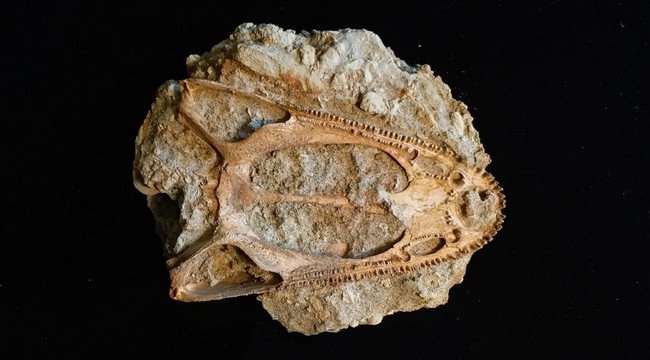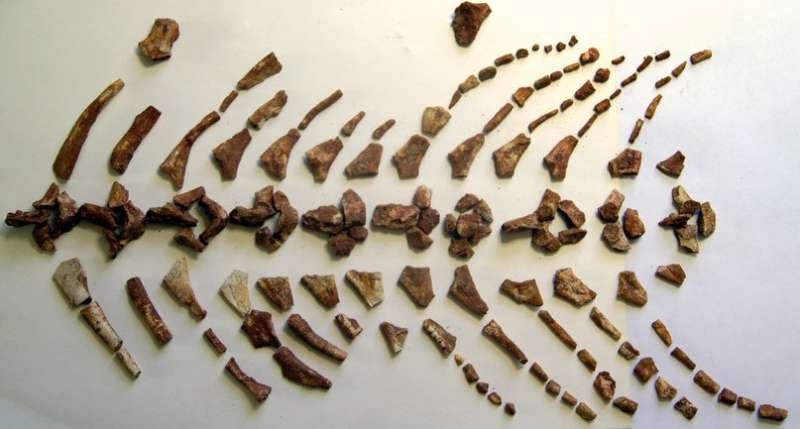The full skull of the early Triassic period amphibian Wetlugasaurus. Credit: SamaraPolytech
In June, the staff of the Geology and Geophysics Department of Samara Polytech took part in a scientific expedition of the Triassic and Jurassic deposits in the southeast of the Samara region.
One of the findings, made with the participation of the Flagship University scientists, was the skull of a Wetlugasaurus. At first, it appeared to be a rock with fossilized bones protruding, and it was difficult to identify anything valuable. As the researchers prepared the find from the palate side, the teeth and internal nasal apertures—the choanae—became clearly visible.
"Experts of the Paleontological Institute of the Russian Academy of Sciences (Moscow) conducted a detailed assessment of the findings," says senior lecturer Alyona Morova of the Geology and Geophysics Department. She added that that they were lucky to find the fullest skull of a Wetlugasaurus in the world. Alyona also said that the find was completely unexpected for the scientists.
Polytech scientists also made another unusual discovery—the remains of the postcranial skeleton (more than 170 fragments) of one specimen of Labyrinthodont. In addition, they collected zoological materials of modern mammals and herbarium specimens of plants, including several rare and Red Book species.
Labyrinthodonts are an extinct subclass of amphibians, the majority of which lived on the Earth in the Paleozoic and Mesozoic eras (390-150 million years ago). These are the ancestors of all modern mammals, from mice to elephants. Credit: SamaraPolytech
Provided by Samara State Technical University

























